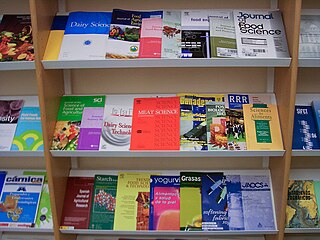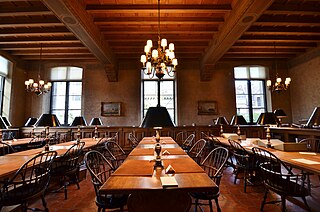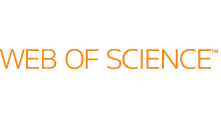Related Research Articles
World history or global history as a field of historical study examines history from a global perspective. It emerged centuries ago; leading practitioners have included Voltaire (1694–1778), Hegel (1770–1831), Karl Marx (1818–1883), Oswald Spengler (1880–1936), and Arnold J. Toynbee (1889–1975). The field became much more active in the late 20th century. It is not to be confused with comparative history, which, like world history, deals with the history of multiple cultures and nations, but does not do so on a global scale. World history looks for common patterns that emerge across all cultures. World historians use a thematic approach, with two major focal points: integration and difference.

Publishing is the activity of making information, literature, music, software, and other content available to the public for sale or for free. Traditionally, the term refers to the creation and distribution of printed works, such as books, comic books, newspapers, and magazines. With the advent of digital information systems, the scope has expanded to include digital publishing such as ebooks, digital magazines, websites, social media, music, and video game publishing.
Electronic publishing includes the digital publication of e-books, digital magazines, and the development of digital libraries and catalogues. It also includes the editing of books, journals, and magazines to be posted on a screen.

The news media or news industry are forms of mass media that focus on delivering news to the general public. These include news agencies, newspapers, news magazines, news channels etc.

Academic publishing is the subfield of publishing which distributes academic research and scholarship. Most academic work is published in academic journal articles, books or theses. The part of academic written output that is not formally published but merely printed up or posted on the Internet is often called "grey literature". Most scientific and scholarly journals, and many academic and scholarly books, though not all, are based on some form of peer review or editorial refereeing to qualify texts for publication. Peer review quality and selectivity standards vary greatly from journal to journal, publisher to publisher, and field to field.

An academic journal or scholarly journal is a periodical publication in which scholarship relating to a particular academic discipline is published. Academic journals serve as permanent and transparent forums for the presentation, scrutiny, and discussion of research. They nearly universally require peer review or other scrutiny from contemporaries competent and established in their respective fields. Content typically takes the form of articles presenting original research, review articles, or book reviews. The purpose of an academic journal, according to Henry Oldenburg, is to give researchers a venue to "impart their knowledge to one another, and contribute what they can to the Grand design of improving natural knowledge, and perfecting all Philosophical Arts, and Sciences."
News values are "criteria that influence the selection and presentation of events as published news." These values help explain what makes something "newsworthy."

Sports journalism is a form of writing that reports on matters pertaining to sporting topics and competitions. Sports journalism started in the early 1800s when it was targeted to the social elite and transitioned into an integral part of the news business with newspapers having dedicated sports sections. The increased popularity of sports amongst the middle and lower class led to the more coverage of sports content in publications. The appetite for sports resulted in sports-only media such as Sports Illustrated and ESPN. There are many different forms of sports journalism, ranging from play-by-play and game recaps to analysis and investigative journalism on important developments in the sport. Technology and the internet age has massively changed the sports journalism space as it is struggling with the same problems that the broader category of print journalism is struggling with, mainly not being able to cover costs due to falling subscriptions. New forms of internet blogging and tweeting in the current millennium have pushed the boundaries of sports journalism.
A monograph is a specialist written work or exhibition on one subject or one aspect of a usually scholarly subject, often by a single author or artist. Although a monograph can be created by two or more individuals, its text remains a coherent whole and it keeps being an in-depth academic work that presents original research, analysis, and arguments. As a focused, in-depth and specialised written work in which one or more authors develop a uniform and continuous argument or analysis over the course of the book, a monograph is essentially different from an edited collection of articles. In an edited collection, a number of original and separate scholarly contributions by different authors are edited and compiled into one book by one or more academic editors.

Google Scholar is a freely accessible web search engine that indexes the full text or metadata of scholarly literature across an array of publishing formats and disciplines. Released in beta in November 2004, the Google Scholar index includes peer-reviewed online academic journals and books, conference papers, theses and dissertations, preprints, abstracts, technical reports, and other scholarly literature, including court opinions and patents.
An article or piece is a written work published in a print or electronic medium, for the propagation of news, research results, academic analysis or debate.

North American Congress in Latin America (NACLA) is a non-profit organization founded in 1966 to provide information on trends in Latin America and relations between Latin America and the United States. The organization is best known for publishing the quarterly NACLA Report on the Americas, and also publishes "books, anthologies and pamphlets for classroom and activist use". The NACLA Report on the Americas print magazine was briefly discontinued in 2015, but relaunched under the Taylor and Francis imprint Routledge in May 2016.

The Frick Art Reference Library is the research arm of The Frick Collection. Its reference services have temporarily relocated to the Breuer building at 945 Madison Avenue, called Frick Madison, during the renovation of the Frick's historic buildings at 10 East 71st Street in New York City. The library was founded in 1920 and it offers public access to materials on the study of art and art history in the Western tradition from the fourth to the mid-twentieth century. It is open to visitors 16 years of age or older and serves the greater art and art history research community through its membership in the New York Art Resources Consortium.
Scholarly communication involves the creation, publication, dissemination and discovery of academic research, primarily in peer-reviewed journals and books. It is “the system through which research and other scholarly writings are created, evaluated for quality, disseminated to the scholarly community, and preserved for future use." This primarily involves the publication of peer-reviewed academic journals, books and conference papers.

The Association for Slavic, East European, and Eurasian Studies (ASEEES) is a scholarly society dedicated to the advancement of knowledge about the former Soviet Union and Eastern and Central Europe. The ASEEES supports teaching, research, and publication relating to the peoples and territories within this area.

The Web of Science is a paid-access platform that provides access to multiple databases that provide reference and citation data from academic journals, conference proceedings, and other documents in various academic disciplines. Until 1997, it was originally produced by the Institute for Scientific Information. It is currently owned by Clarivate.
The publication cycle is the process through which authors take their ideas and put them into viewable form. This includes all forms of publication, from initial research reports to articles posted on websites, and commonly recognized magazine articles and books.
Academic Search is a monthly indexing service. It was first published in 1997 by EBSCO Publishing in Ipswich, Massachusetts. Its academic focus is international universities, covering social science, education, psychology, and other subjects. Publishing formats covered are academic journals, magazines, newspapers, and CD-ROM.
Academic journal publishing reform is the advocacy for changes in the way academic journals are created and distributed in the age of the Internet and the advent of electronic publishing. Since the rise of the Internet, people have organized campaigns to change the relationships among and between academic authors, their traditional distributors and their readership. Most of the discussion has centered on taking advantage of benefits offered by the Internet's capacity for widespread distribution of reading material.
The following outline is provided as an overview of and topical guide to journalism:
References
- ↑ "Tru Libraries". Thompson Rivers University. 10 March 2018.
- ↑ "The Information Cycle". University Library, University of Illinois at Urbana-Champaign. Retrieved 8 July 2015.
- 1 2 Burkhardt, Joanna M.; MacDonald, Mary C.; Rathemacher, Andrée J. (2010). Teaching Information Literacy: 50 Standards-based Exercises for College Students. American Library Association. pp. 33–34.